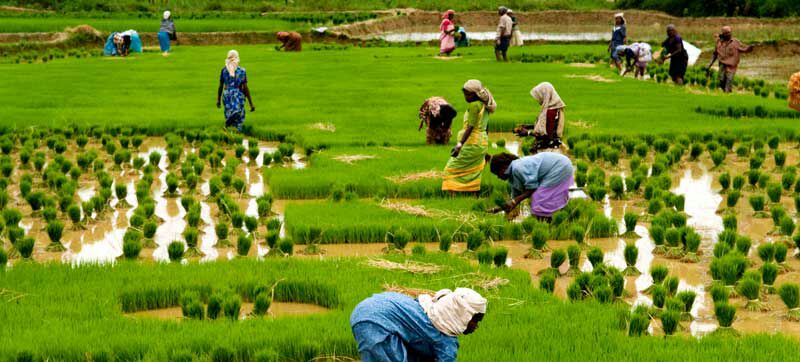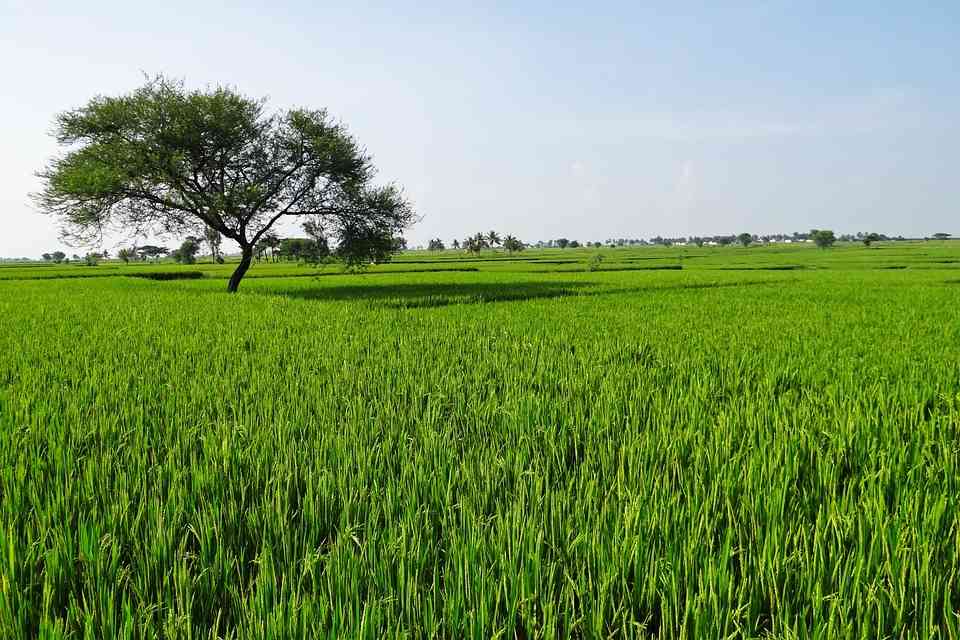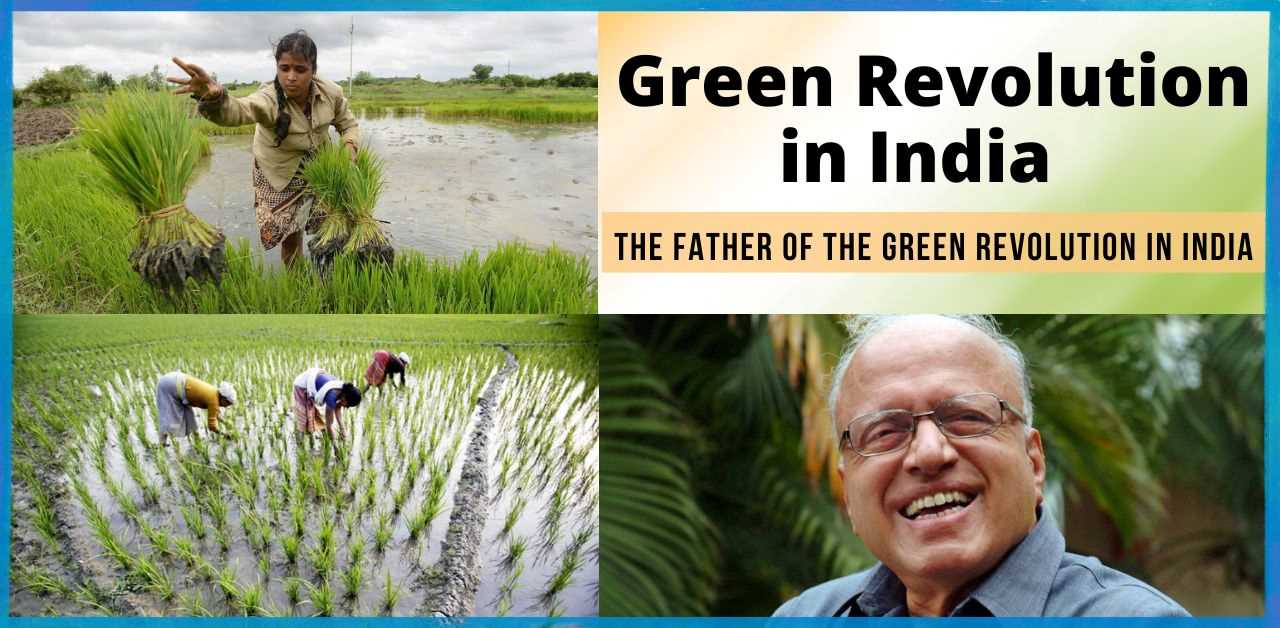Table of Contents
The Green Revolution has had a dramatic impact on incomes and food supplies in many developing countries. The term green revolution was first used by William Gaud and Norman Borlaug is known as the Father of the Green Revolution. The Green Revolution or the Third Agricultural Revolution is the set of research transfer of technology initiatives occurring between 1950 and the late 1960s that increased agricultural production in different parts of the world, beginning in the late 1960s. The initiatives resulted in the adoption of new technologies, including high-yielding varieties (HYVs) of cereals, especially dwarf wheat and rice. Studies show that the Green Revolution contributed to the widespread reduction of poverty, averted hunger for millions, raised incomes, reduced greenhouse gas emissions, reduced land use for agriculture, and contributed to declines in infant mortality.
What is Green Revolution in India?

After independence, India had to face a very difficult time in growing its economy and around 70 percent of the population was dependent on agriculture to make their living. India also had to face a food crisis during the British Raj, only interested in promoting cash crops. As compared to the rising population the production of food grains was not sufficient. Agriculture was also fully dependent on monsoon due to the lack of irrigation facilities and pesticides, and machinery was also not available to increase the output in the fields.
In India, the Green Revolution was mainly led by M.S. Swaminathan (Father of Green Revolution in India) , the advisor to India’s minister of agriculture, who extended an invitation to Norman Borlaug to visit India. In India, M.S Swaminathan is regarded as the father of the Indian Green Revolution. He was an Indian geneticist; under his guidance and supervision, high-yielding varieties of wheat and rice were grown in the fields of Indian states.

Under the Leadership of Congress leader Lal Bahadur Shastri, the Green Revolution within India commenced in 1968, leading to an increase in food grain production, especially in Punjab, Haryana, and Uttar Pradesh. The green revolution in India refers to a period when Indian Agriculture was converted into an industrial system due to the adoption of modern methods.
Why Green Revolution started in India?
The green revolution in India continued from 1965 to 1977. Before the green revolution was started i.e before 1965 the condition of India’s agriculture was in very devastating conditions. In 1943, India suffered from the world’s worst recorded food crisis; the Bengal Famine, which led to the death of approximately 4 million people in eastern India due to hunger. Even after independence in 1947, until 1967 the government solely concentrated on expanding the farming areas. But the population was growing at a much faster rate than food production. So the government had to think outside of the box and had to introduce the green revolution as this revolution brought a positive impact on India’s agricultural sector.
Also Read: Climate Change Policy of India
Some of the positive impacts of the Green Revolution in India are-
- Increase in farmers’ earnings: The earnings of farmers were increased due to the increase in farm production raising their level of income. The big farmers with more than 10 hectares of land benefited from this revolution by investing large amounts of money in various inputs like HYV seeds, fertilizers, machines, etc. It also promoted capitalist farming.
- Generating Employment–The Green revolution had bring a new scope of employment for not only the agricultural workers but also industrial workers by creating factories.
- Increase in crop production: The Green Revolution helps India to become independent in producing food grains instead of relying on imports. It resulted in a grain output of 131 million tonnes in the year 1978-79 and established India as one of the world’s biggest agricultural producers.
- Reduced Import of Food Grains: India became self-sufficient in food grains and had sufficient stock in the central pool, even, at times, India was in a position to export food grains.
- Growth of Industries– The demand goes up for different types of machines like tractors, harvesters, threshers, combines, diesel engines, electric motors, pumping sets, etc. Furthermore, the industry engaged in the production of fertilizers, insecticides, pesticides, etc., was also grown considerably resulting in the growth of this sector as well as the employment sector.
- Rural Electrification- The crucial component of the modern agricultural system is rural electrification. It is an inexpensive source of energy that may be utilized for a variety of farm tasks, including the irrigation of sprinkler systems, processing and preserving agricultural produce, and lifting water via tube wells or pump sets.
- Development of Rural Roads –For villagers to access nearby markets and other communities, rural roads are crucial. But there is still a significant disconnect between the need for and supply of village roads. Agriculture that is progressing needs marketing. Regulated markets give farmers the ability to sell their crops and buy household goods, farm equipment, pesticides, fertilizers, and other agricultural inputs.
- Agricultural Universities- The main focus of agricultural colleges and other institutes is doing agricultural research and showing the positive impacts of the results on farmers. These universities’ extensive research and extension efforts have had a significant positive impact on the agriculture sector. The work done by these colleges will play a significant role in the success of the Green Revolution.
Negative Impacts/Drawbacks –
- Consumption of water: The crops cereals, required almost 50% of water. Canal systems were introduced, and irrigation pumps also sucked out the groundwater to supply the water-intensive crops, such as sugarcane and rice, thus depleting the groundwater levels.
- Unemployment rate increases: The widespread use of mechanization and modern machinery created unemployment. The worst affected were the poor and the landless laborers.
- Hazardous to Health: The large-scale use of chemical fertilizers and pesticides such as Methomyl, Phorate, Triazophosand other chemicals resulted in major health issues.
- Coarse cereals, pulses, etc were left out: All food grains including wheat, rice, jowar, bajra and maize have gained from the revolution, other crops such as coarse cereals, pulses, and oilseeds were left out of the ambit of the revolution. Major commercial crops like cotton, jute, tea, and sugarcane were also left almost untouched by the Green Revolution.
- Inequality in regions- The green revolution so far affected only 40 percent of the total cropped area and 60 percent is still untouched by it. It has hardly touched the Eastern region, including Assam, Bihar, West Bengal, and Orissa, and arid and semi-arid areas of Western and Southern India. The most affected areas are Punjab, Haryana, and western Uttar Pradesh in the north and Andhra Pradesh and Tamil Nadu in the south.
- Over Usage of Chemicals- The Green Revolution requires large-scale use of pesticides and synthetic nitrogen fertilizers for improved irrigation projects and crop varieties.
- Environmental damage- Excessive and inappropriate use of fertilizers and pesticides polluted waterways and killed beneficial insects and wildlife. It has caused the over-use of soil and rapidly depleted its nutrients. The rampant irrigation practices led to eventual soil degradation. Groundwater practices have fallen dramatically. Further, heavy dependence on few major crops has led to the loss of biodiversity of farmers and the increase of stubble burning cases since 1980. These problems were aggravated due to the absence of training to use modern technology and vast illiteracy leading to excessive use of chemicals.

Conclusion:
In conclusion, we can say that the green revolution brings a developing country an unprecedented level of national food security. This revolutionizes the agricultural sector from a traditional base to a modern mechanical using sector. Educating the farmers to use High Yield Pesticides(HYPs) and hybrid seeds which give better output with fewer efforts increasing the stocks of food and grains.
But since mostly the farmers are not educated and poor in those days they, however, lesser heed was paid to factors other than ensuring food security such as environment and health hazards. The policymakers must target the poor more to ensure that they receive greater direct benefits from new technologies and those technologies will also need to be more environmentally sustainable.

